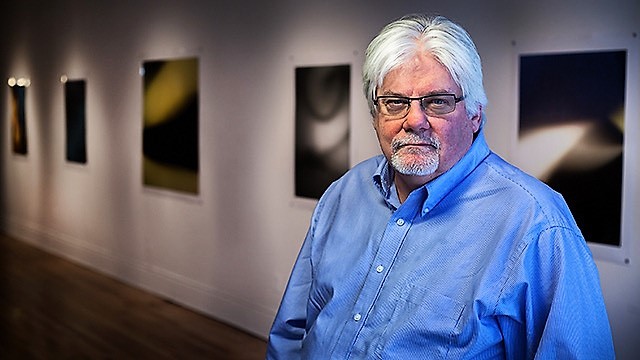
Arts crusader wants Brampton to embrace sweeping change to create more culture – and jobs – in the city
Brampton: The Movie (Spring, 2015)
INTERIOR
City Hall. Brampton council chambers. Establishing shot. The camera pans the chamber and finds the faces of councillors and the mayor, surrounded by a group of middle-aged bureaucrats. The camera shifts to the gallery, filled with “artsy types”, young, bright-eyed and diverse.
FADE IN ON
A teenager’s face – smiling, hopeful, and awaiting a council decision on funding for the arts. In the background, we can hear the mayor’s voice calling for a vote.
PULL BACK TO REVEAL
Mayor Linda Jeffrey is visually pumped up and speaking extemporaneously into the microphone. “I’m proud to announce the vote was unanimous and that means full funding for the Brampton Arts Council. This commitment is only the beginning. We plan to spend even more in our next budget. This is our 100 percent commitment to the arts.”
CUT TO
The teenager’s smiling face filling the screen.
PULL BACK
She is surrounded by a celebratory crowd, hugging, clapping, and shouting their approval. Joyous noise fills the chamber.
CUT TO
The teenager again. Weeks have passed. She has a dreamy look on her face and admires a painting sitting on an easel in her small studio. Through a side window you can see Garden Square and some of the buildings in Brampton’s downtown core. She puts the final touches on her painting (a busy winter scene of kids skating on the rink at Gage Park, surrounded by architecturally stunning buildings, as people stream into venues that house galleries and performing arts) and in a final flourish, dips her brush into paint and signs her name on the bottom.
FADE OUT
CLOSING MUSIC
RUN CREDITS
This would be a stirring end to a feel-good screenplay about a pioneering moment in the history of our arts community. But, of course, it is not. It is pure fantasy. In early 2015, Brampton council put the boots to the Brampton Arts Council (BAC) after nearly 40 years in operation. Thirteen years of core funding was eliminated. The city bluntly restructured community grants which made up the lion’s share of BAC’s revenue stream. It had two months to find other money. This charitable arms-length organization simply voted itself out of existence. The end was corporeal and bloodless.
The artful teen in our fantasy screenplay might be working now at a studio in the Junction Triangle area of Toronto, one of the most vibrant arts communities in the country.
Brampton’s Chuck Scott has written a ton of screenplays and is one of Canada’s best filmmakers. But as a BAC board member during its dismemberment, he still bristles with contempt over the city’s short-sighted decision.
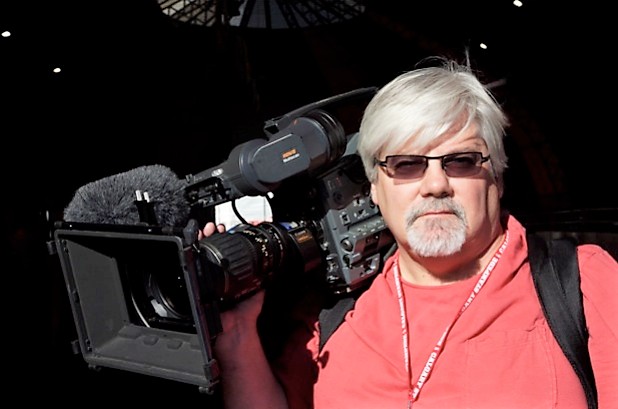
Brampton filmmaker Chuck Scott
The award-winning producer/director has over 275 documentaries, dramatic, and factual television programs to his credit. His shows have aired on prestigious stations like BBC Five, Five, PBS, NBC, NHK, Discovery Channels, National Geographic and more in over 130 countries. They’ve won over 20 national and international awards, including his latest narrative film, Eleftheromania, starring Oscar-winner, Olympia Dukakis.
Scott is a truth-teller, a weaver of tales that capture the zeitgeist. He is also one of many Bramptonians still fighting a rearguard action to help articulate the economic and city-building benefits of having a viable and ever-expanding arts community. When he met with The Pointer at a local eatery this week, he was still hopeful for change, but frustrated and ready to vent. He said Brampton “might be the worst major city in Canada for the arts.”
Scott doesn't want to see Brampton residents continue to spend their money on the arts and culture scene exclusively in Toronto, and increasingly in other nearby cities where emerging arts spaces pull revenues away from our community. A city the size of Brampton needs its own vibrant cultural spaces, not only for convenience, but to reflect the city and its people while providing all the things the arts do for places that showcase the creativity of those who express the world back to us.
Scott carries plenty of credibility. He served on the board for a number of arts organizations such as Latitude 53 Art Gallery, Alberta Media Production Industries Association and the Brampton Arts Council. He is currently a director of the Friends of the Peel Art-Gallery Museum and Archives (PAMA) and was appointed by Brampton council to head an Arts and Culture Citizens Panel to review the way arts are being governed and supported in the city. Based on the work of the panel the city staff and consultants created an Arts and Culture Masterplan for the city of Brampton. He’s also the 2013 Brampton Arts Person of the Year.
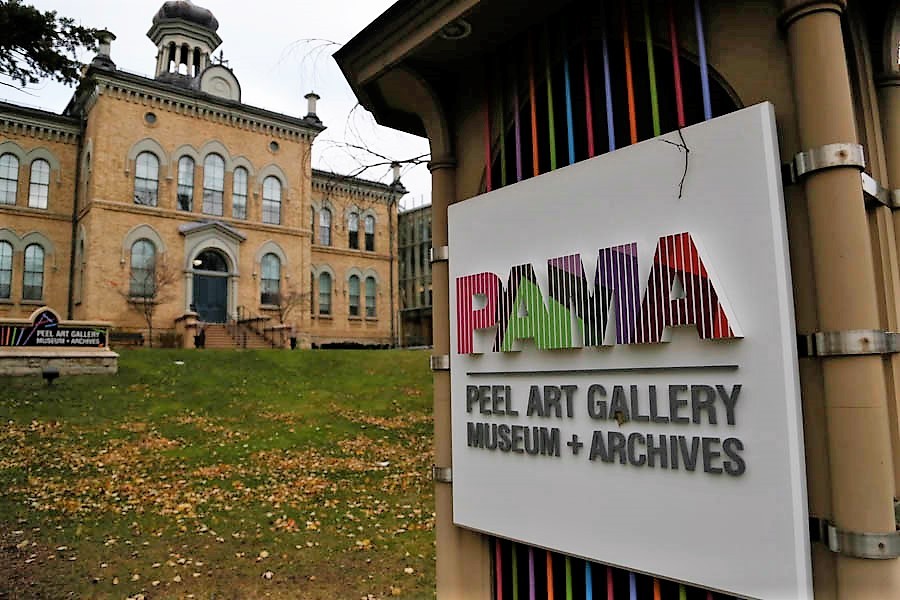
Not once, but twice, this tireless advocate gave Brampton council his perspective on the challenges facing the city – and the opportunities available. He backed up each of his presentations before council with startling statistics.
In early December 2017, Scott spoke about the 2018 budget and its arts and culture components. He said the city made “a few baby steps” towards a stronger arts-oriented city by moving it into the economic development portfolio. That’s a better fit than recreation, he said, but not the standalone spot it deserves. “There has been a greater effort to engage the arts and culture community than in the past, but not as strong as when the Arts Council was in place,” he stated.
Scott chaired the Arts and Culture Panel, participated in numerous arts and culture events around the city, and sat at the table during the recent Future Ready charrette, when ideas to invigorate the city’s arts scene were brought forward. He told councillors: “I have listened to the artists, arts groups and cultural supporters and they wonder why in an age where study after study says arts and culture creates jobs, drive economies and is a future-proof industry, why our city is so woefully underfunded in this area. And why, when the councillors say they support the arts, there is little action to show for it.”
His stinging comment was followed up by this: “The 2018 budget has $100K in the Arts and Culture Capacity Building Stream in the Community Grant program. This is all the funds available to over 50 groups and organizations across our city. So, if we share that money evenly, that is $2,000 per group. For some that is more than they need, but for most, it is far from enough. I want to make it clear I do not think the city should fully fund any group, however, the City must be there for a significant portion of core funding in the arts for the short and long term.”
He then poured out the numbers:
• The population of Brampton (2016) was 593,638.
• The Arts and Culture Grant program represents 17 cents per person.
• The national average is $8.86.
• If Brampton matched the national average, the grant program would be $5,260,000 annually.
(Scott drew his numbers from Municipal Benchmarking Canada.)
He wasn’t finished. He spun out more numbers. The national average, if you add the cost of providing all cultural services including grants and the funding of events, cultural venues, art galleries, historical sites, and museums, the total is $26.84 per capita. For Brampton, that would add up to about $16 million, using the 2016 census figures. In contrast, Brampton is investing less than half the national average.
Scott says it lags behind most cities in Canada in arts infrastructure. It might be 9th largest in population, but here’s what it does not have: a municipal art gallery; a municipal art council; a funded public arts program; a studio, rehearsal and maker space centre; and required support for its Artist Run Centre.
To compare: Every other top 10 Canadian city has a municipal art gallery, supports Artist Run Centre(s), and invests millions in arts and culture, at or above the national average.
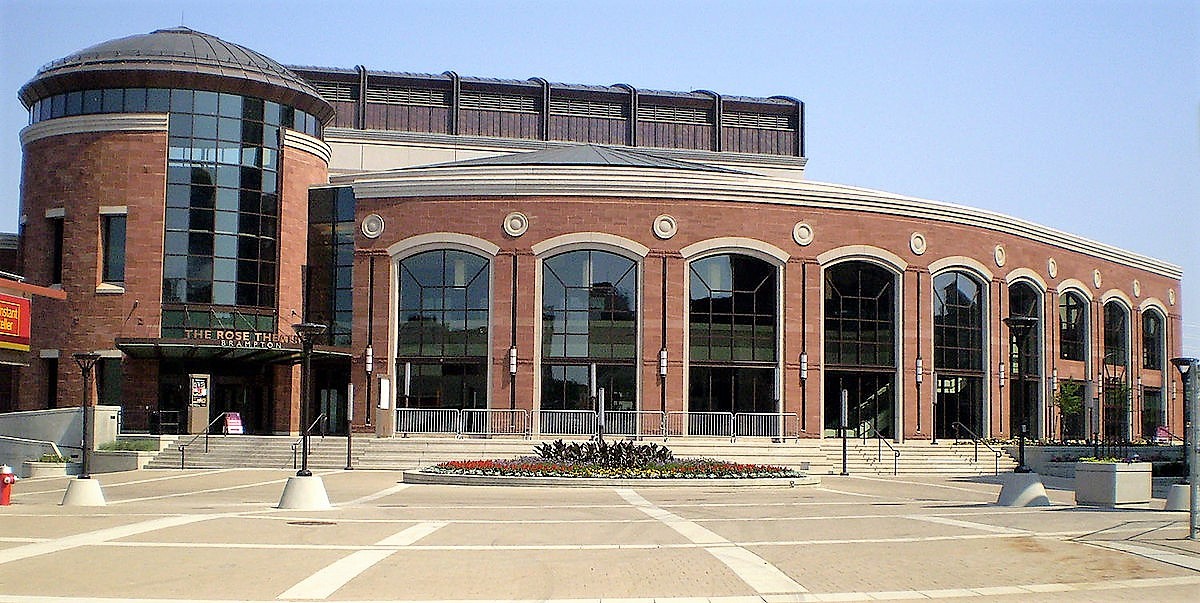
The Rose Theatre
Scott recognizes that major cities are the places arts and culture thrive. Those who consume the richness and vitality of everyday expressions of our world flock to urban centres. Those artists driven to create need support in urban centres like Brampton, where the young and old from across the city, the outlying areas and far beyond gravitate and come together to produce their art.
Before moving to Brampton as a teenager, Scott grew up in North Bay (population 51,000). He said even his hometown has a municipal gallery and three artist-run centres.
He told Brampton council a few years ago that arts and culture is a $28.5 billion-dollar industry in Ontario, and creates over 300,000 jobs. “Many of our citizens’ work in these industries, but sadly, it is outside of Brampton,” he said.
He wanted council to get in front and move on with some simple solutions, especially in three areas, supported by the Arts Panel and at the Future Ready charrette: start study into the best location for a Municipal Art Gallery and a municipal arts and culture Maker Space; fund and start up a new version of the arts council, based on the budget they had when council pulled funding; and give core funding to the only artist run centre (Beaux Arts Brampton) in the city.
A year later, he was back in council and talking about the city’s Arts Master Plan, something that ate up thousands of hours of time from volunteers.
Scott said he had mixed feelings about the future, and was still smarting from the decision to defund the arts council. He said the arts community was in tatters because of a lack of funding, lousy communication, no trust between the arts community and the city, poor infrastructure, and siloization. He said over the past three years, more than 40 arts groups in Brampton closed their doors. Others were teetering on the brink. He also reported some good news. A new festival FOLD (Festival Of Literary Diversity) had grown into a force over its three years in operation, and B-Jazzed, now the largest jazz festival in Peel Region and one of the most well-attended in the GTA, was a made-in-Brampton success story.
South Asian film festivals and musical performances are now regular features in the city, although not enough diverse arts and cultural programming is being planned in Brampton, considering its huge cosmopolitan population, say many critics.
Scott’s overriding theme was the same in 2018 as it was in 2017: to be a world-class city, greater focus had to be placed on creating a powerful arts community. Without it, Brampton could hardly be called a city.
The time for study was over, he said. Groups were folding, artists were leaving. Before it became a stampede, the city must act.
His suggestions were to pass a motion for more money to make sure groups like Beaux Arts Brampton, BMT (Brampton Music Theatre), B-Jazzed, FOLD and some of the emerging film festivals featuring productions from around the world would thrive and survive. And start building infrastructure to house the arts.
Why did staff approve the sale of a city-owned property at Orenda and Rutherford Roads that was used by performance and fine arts people?
Why isn’t vacant, city-owned office space in the downtown not made available (even temporarily) to artists so they can help enliven a moribund core? Other cities across North American offer up unused resources as economic drivers, especially for the arts.
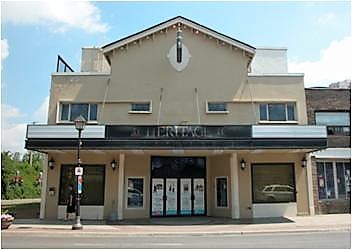
The empty Heritage Theatre downtown.
Feeding money and resources to artists isn’t a waste of taxpayers’ money, but, creates a multiplier effect. Scott used his own business as an example of how prudent the arts community is when spending money.
“In the film business,” he explained, “we try to get every dollar on the screen. Lawyers, consultants, and administration costs keep money off the screen.”
Scott has spent most of his adult life dealing with governments in over 40 other countries. That included co-production treaties, tax credits, film permits, photo permits, using museums, galleries and even shooting in the Forbidden City within central Beijing. He says he would gladly set up temporary residence for one of his documentary projects in Brampton – if the city had better transit, available arts space, and all-day, two-way GO train service to connect Brampton to the arts community in Toronto and other local venues in the region.
A recent story on the Zolo Canada website named the Top 20 cities in Canada for artists. It included London, Alter Bay, B.C., Stratford, Burnaby, Regina and Charlottetown, all smaller than Brampton. They sported vibrant arts scenes, with ideal infrastructure that included lofts, galleries, festival-spaces, outdoor facilities and theatres and working centres. Artists weren’t viewed as a parasitic class, but key players in urban renewal.
Urbanologist Richard Florida said scientists, engineers, architects, designers, artists and entertainers are part of a growing rank of professional knowledge workers. They are often labelled “The Creative Class" – and Florida assigns that label to five million people in Canada, or close to 30 percent of the workforce.
Creativity, he said, is a fundamental driver in our economy.
Jane Jacobs, the author of numerous tomes on city-building, saw art as a key component of growth. She said ideas, innovations, companies and work comes from a fusion of creative forces. This incubation of art and business can lead to employment for thousands. Think Stratford, Niagara-on-the-Lake, Montreal, Quebec City, Vancouver, or even tiny towns, like Elora.
The University of Toronto’s Martin Properity Institute assisted Florida in putting together the Canadian Creativity Index, identifying the Top 20 arts and culture cities. Brampton wasn’t on it. Kitchener, Sherbrooke, Regina, Kingston, and St. John’s were – all much smaller than Brampton.
While Montreal pours the most amount of per-capita money into the arts (over $20, not including investment in capital infrastructure, according to Scott), Brampton pays pennies, a pitiful 17 cents.
BAC was created in 1978, expanded and rebranded as the Brampton Arts Council in 1982, and became a non-profit charitable organization in 1989 – the same year it started getting 100 percent core funding from the City. BAC was a one-stop shop for arts and culture events and established fundraising programs. In 1999, it helped launch the Heritage Arts Culture and Entertainment Group, and HACE created Beaux-Arts Brampton.
The development and implementation of the current Culture Master Plan is led by a core team that includes Economic Development and Culture Department staff from the city along with consulting groups Lord Cultural Resources and Nordicity. A steering committee composed of leaders in Brampton’s arts, culture, heritage and creative entrepreneurial communities, is assisting the core team.
But if more money was poured into the arts, instead of arts studies, Brampton taxpayers would have more return on their dollars. There has never been a flint-eyed arts coalition to put pressure on council, and no names spring to mind as unfailing advocates on council or in the mayor’s chair. Susan Fennell was a vocal supporter of the now defunct Brampton Symphony Orchestra, but after it rose to national acclaim under the guidance of chief artistic director Robert Raines, a political war between symphony organizers and Fennell, whose private fundraising gala asked the organization to submit financial statements it did not agree with, the BSO was eventually banned from performing in city-owned facilities and disbanded shortly after.
Fennell claimed to be a supporter of the city’s arts scene through her private arts gala, but reports revealed that only a small fraction of money raised by her actually went to arts groups.
Scott points to a federal report concluding that 4 percent of GDP ($28 billion) comes from the arts community, while all sports – including NHL teams in Canada, the Toronto Blue Jays, etc. – amounts to just $4.5 billion. In Brampton, the disproportion of sports fields and rinks and pools to arts infrastructure is striking. Even the Heritage Theatre, opened in 1923 and once a flourishing performance centre, has been long shuttered and allowed to die. Every few years ideas have been floated by the city to refurbish the once iconic space, and after the City of Brampton, which owns the property, put it on the market in 2017, some private interest has been voiced to restore the building to its former glory, but it remains shuttered.
Other cities recognize the benefits of a thriving arts community. Brampton’s Vision 2040 is a sweeping plan for the design of the city’s future, that discusses artistic renewal as part of a healthier “mosaic” desired by more than 13,000 residents who contributed to the strategy.
In 2011, Toronto introduced an action plan called Creative Capital Gains. It said the cultural economy contributed more than $9 billion annually to its GDP and employed 130,000+. It pushed for space, infrastructure, cultural entrepreneurs, and opened with a telling quote from Jacobs: “Whenever and wherever societies have nourished and prospered rather than stagnated and decayed, creative and workable cities have been at the core of the phenomenon. Decaying cities, declining economies, and mounting social troubles travel together. The combination is not coincidental.”
The Bentway, a new arts-driven and eco-friendly revitalization of the scrub land under the ugly and intrusive Gardiner Expressway in Toronto has been a runaway success. It is home to an amphitheatre, festivals, public art, and visual and performing art projects. Prioritizing innovative artwork that is accessible, connected, generative, and participatory, has connected the lower Spadina-Dufferin basin to an area dominated by an ugly highway that was once viewed as a barrier to Lake Ontario. Now, thanks to the emerging vitality created by arts and culture, the Gardiner no longer dominates a conversation around physical barriers, as psychological barriers are being brought down by the progressive use of space below, allowing art to dominate the discourse of the area’s future.
In July 2015, Mississauga retained a consulting team to develop a Creative Industries (CI) Strategy. CI is one of the fastest growing sectors of the economy, and neighbouring communities have also identified it as vital to growth. These include screen-based industries like film and television; digital media; music; emerging online technologies and publishing. The economic and cultural benefits are many, and CI’s strength is in its flexibility. These usually small and medium-sized enterprises operate in a high-risk business environment. But for a manufacturing-heavy city like Brampton, mired in the industry’s decade-long contraction, investment in CI could be the way of the future, attracting private sector investment and some of the brightest creative talent from around the world.
The alternative, says Scott, is to keep focusing on manufacturing, transportation and warehousing, which have turned Brampton into a flattened, low-return economic zone where huge, grey and brown industrial spaces dominate the landscape.
Scott would like to see Brampton audit its assets like the Rose Theatre and see if they might be more efficiently run as an arms-length business. Whether a symphony is playing (which demands a big staff, and lots of prep time), or a comedian holding a mic on centre stage alone or a huge Bollywood act touring North America, the staffing is the same. The building is also betwixt and between – too big to hold local events, but too small to attract major events, like a touring Broadway play.
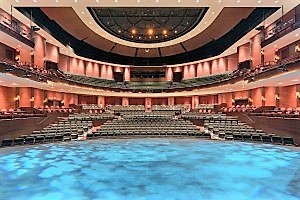
The Rose
Arts groups like Beaux Arts need core funding, but there has to be political will because the payback is long-term, and more nuanced. It’s hard to put a price tag on building a city’s soul.
As mentioned earlier, Brampton’s city core is riddled with vacancies. In Toronto, economic development followed in the footsteps of an artist flowering, first in Yorkville, then on Queen Street, and now in Parkdale, The Junction and beyond. The Stratford Shakespearian Festival began in a tent in a field, and is now the beating heart and economic driver of this southwestern Ontario city. Even old heavy-industry cities like Hamilton and Kitchener are reimagining themselves through flourishing local arts groups. Burlington and Oakville also attract large followings because of their well-funded local arts institutions.
Chuck Scott and his fellow travelers in the arts community in Brampton are tired of dealing with politicians and a public unmoved by the long-term benefits reaped from the arts. When Scott moved from North Bay, he attended Chinguacousy High School and fell in with a burgeoning arts program at the school. There was art, theatre, and film studies. He became obsessed with the latter, and along with a group of students, got $400 in seed money from the local township to produce a film with the clunky name: ‘The Nitty Gritty Bramaching Wing Ding.’
In retrospect, says Scott, “this film helped drive my career. Without it [the seed money], I probably wouldn’t be in the film business.”
This small example of public support for the arts, is happening in cities right across the planet. Brampton has produced its fair-share of world-famous artists, from Russell Peters (comedy) to the late Alan Thicke (actor/songwriter), Alessia Cara (singer), Michael Cera (actor), Rupi Kaur (poet, illustrator), Keshia Chanté (singer), Rohinton Mistry (author), Lee Aaron (singer), Dean McTaggart (songwriter), and Scott Thompson of The Kids in the Hall fame. There are many more. Are there more to come?
Yes, says Scott, if the city believes in its arts community, spreads out seed money for the sector to flourish.
The argument that Brampton taxpayers can’t afford to fund the arts is both specious, and self-destructive. Eliminating BAC solved nothing, and the move is still being felt in the sputtering Brampton arts community.
Every major (and minor) city has an arts council organization. According to those who attended the final meeting that broke-up BAC, members were disheartened, confused, and angry.
At the time, Scott told the Brampton Guardian: “We are the sad sister of the arts in Canada.”
Scott would like to write one more screenplay and give it a happy ending. It would star members of a vibrant arts community in Brampton, a plugged-in political class, and thousands of supportive taxpayers enjoying the passion of an enlivened sector driving urban renewal.
Submit a correction about this story


